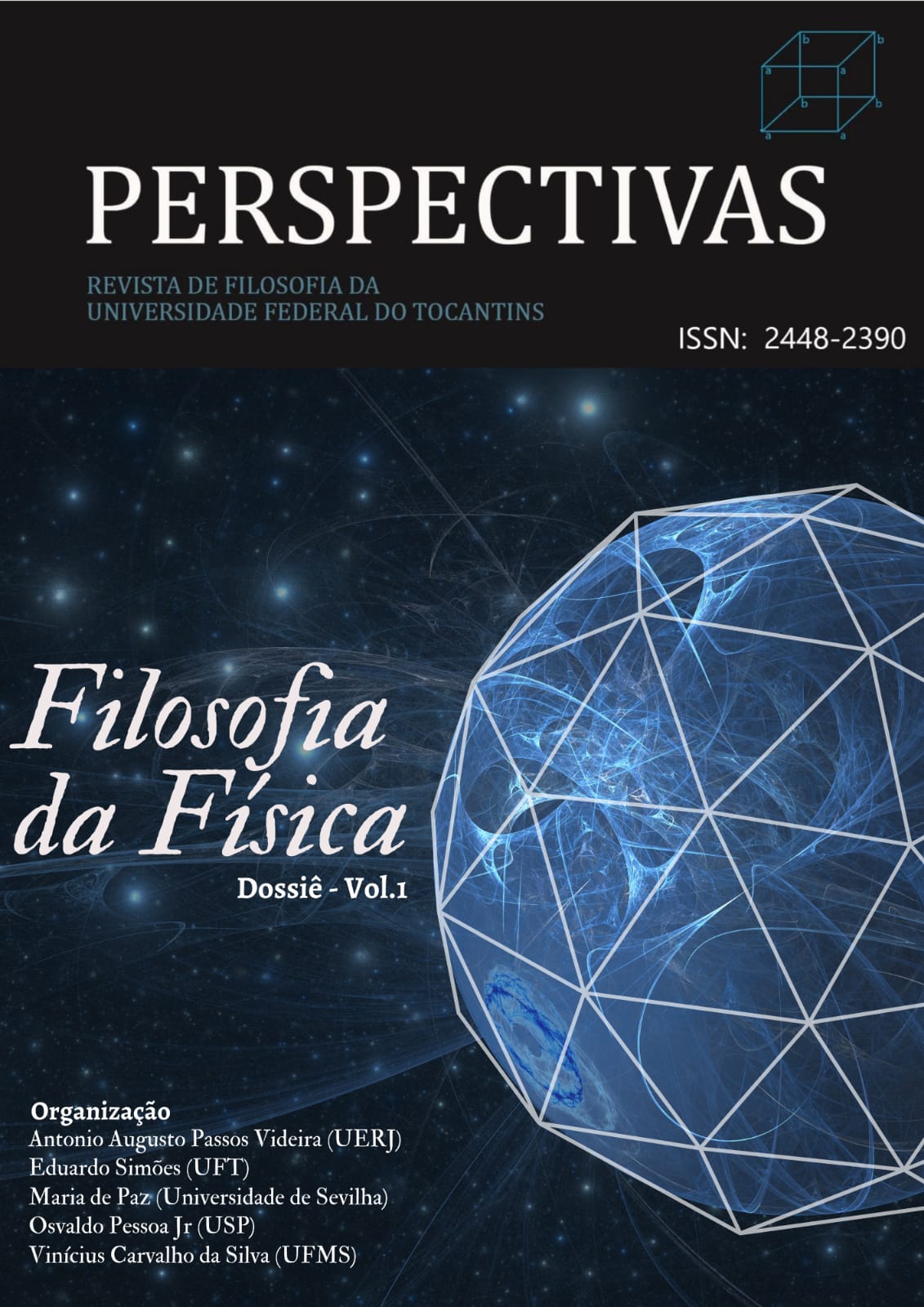On the possibility of a real reform in current physics
Penrose and twistor theory
DOI:
https://doi.org/10.20873/rpv7n2-43Resumo
Since the late 1960s, Roger Penrose has had the ambition to develop a new theory that rethinks the foundations of quantum mechanics. His twistor theory aims to carry out this difficult task. Although today the theory is still in development, it is no less true that it is finding more and more followers and its results are beginning to seem not as far-fetched as initially believed. The goal is still far away, but his impetus for wanting to change things is still valid.
Referências
BORN, M., BORN, H., EINSTEIN (1971), Albert, Correspondencia (1916- 1955), trad. por Félix Blanco, México D.F., Siglo XXI editores.
EINSTEIN, A., (2013), Mi visión del mundo, trad. por Sara Gallardo y Marianne Bübeck, Barcelona, Tus-quets Editores.
HERCE, R., (2014), De la Física a la Mente: El proyecto filosófico de Roger Penrose, Madrid, Biblioteca Nueva.
HODGES, A., (2013), “Eliminating spurious poles from gauge-theoretic amplitudes”, J. High Energ. Phys. 2013, 135. https://doi.org/10.1007/JHEP05(2013)135
MARCOLLI, M., PENROSE, R., (2021), “Gluing noncommutative twistor spaces”, The Quarterly Journal of Mathematics, Volume 72, Issue 1-2, Pages 417–454.
PENROSE, R., (2006), El camino a la realidad, trad. por Javier García Sanz, Barcelona, Random House Mondadori, S.A. (Debate).
PENROSE, R, (2016), Fashion, Faith and Fantasy in the New Physics of the Universe, Nueva Jersey, Prince-ton University Press.
PENROSE, R., (1991) La nueva mente del emperador: En torno a la cibernética, la mente y las leyes de la física, trad. por Javier García Sanz, Barcelona, Grijalbo Mondadori.
PENROSE, R., (2012), Las sombras de la mente: una búsqueda de la ciencia perdida de la consciencia, trad. por José Javier García Sanz, Barcelona, Crítica.
PENROSE, R., (2017), Moda, Fe y Fantasía en la nueva física del universo, trad. por Marcos Pérez Sán-chez, Barcelona, Penguin Random House Grupo Editorial (Debate).
PENROSE, R., (2015), “Palatial twistor theory and the twistor googly problem”, Phil. Trans. R. Soc. A 373: 20140237. http://dx.doi.org/10.1098/rsta.2014.0237
PENROSE, R., (1994), Shadows of the Mind: A Search for the Missing Science of Consciousness, Nueva York, Oxford University Press.
PENROSE, R., (1989), The Emperor´s New Mind: Concerning Computers, Minds, and The Laws of Physics, Oxford, Oxford University Press.
PENROSE, R., (2004), The road to reality: A Complete Guide to the Laws of the Universe, London, Jonat-han Cape.
PENROSE, R., Twistor Theory: A Geometric Perspective for Describing the Physical World, in “New Spaces in Physics. Formal and Conceptual Reflections” (Eds. M. Anel and G. Catren), Cambridge University Press (to appear in 2021). For a preliminary version, see https://johnwbarrett.wordpress.com/2020/01/30/penrose-on-palatial-twistors/
PENROSE, R. and RINDLER, W., (1984), Spinors and Space-Time, Vol. I: Two-Spinor Calculus and Relati-vistic Fields, Cambridge University Press, Cambridge.
PENROSE, R. and RINDLER, W., (1986), Spinors and Space-Time, Vol. II: Spinor and Twistor Methods in Space-Time Geometry, Cambridge University Press, Cambridge.
WALLACE, D., (2010), The Everett Interpretation, Oxford University Press, Oxford.
WITTEN, E., (2004), “Perturbative Gauge Theory as a String Theory in Twistor Space”, Commun. Math. Phys. 252, 189–258.
Downloads
Publicado
Versões
- 2023-11-12 (3)
- 2023-11-12 (2)
- 2023-01-08 (1)
Como Citar
Edição
Seção
Licença
Copyright (c) 2023 Daniel Heredia González

Este trabalho está licenciado sob uma licença Creative Commons Attribution 4.0 International License.
Os autores que publicam com esta revista concordam com os seguintes termos:
1. Autores mantêm os direitos concedidos à revista ou o direito de primeira publicação com o trabalho licenciado à Atribuição de Licença Creative Commons Atribuição 4.0 Internacional (CC BY 4.0) que permite o compartilhamento de trabalhos com reconhecimento de autoria e publicação inical nesta revista.
2. Autores têm permissão para aceitar contratos, distribuição não exclusiva da versão do trabalho publicada nesta revista (por exemplo, publicarem em repositório institucional ou como capítulo de livro) com reconhecimento de autoria e de publicação inicial nesta revista.
3. Autores têm permissão e são estimulados a publicar e distribuir o seu trabalho on-line (por exemplo, em repositório institucional ou em sua página pessoal) com as devidas referências à revista.





















